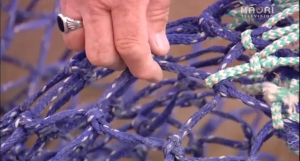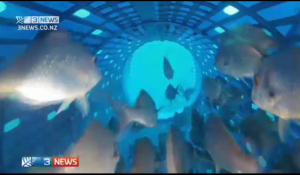Two different research-based approaches to boost New Zealand’s fishing sustainability have recently been covered in the media, both of which involve using nets designed with wider holes so that young fish can escape.

Ngāti Kahungunu, in partnership with Hawke’s Bay Seafoods, are now planning on using a more sustainably-designed net on all their trawlers, reports Aroha Treacher at Māori TV.
The net works by simply orientating the mesh design so that the same-sized holes are square rather than diamond-shaped and therefore open wider, which even enables rounder-shaped small fish to pass through more easily.
Research has shown that this type of net can release around 80 per cent more young fish compared to the traditional diamond design nets, cutting down on bycatch and reducing fishing waste.

Simultaneously, as reported by Emily Cooper at 3 News on Tuesday night, a six-year research project is looking at a new design that takes a different tactic by incorporating a PVC liner as well as ‘escape holes’ for small fish.
The PVC liner in the net allows fish to continue swimming in water inside the net after it has been pulled on deck, so that bycatch fish are less stressed and more likely to survive when released back into the sea.
Preliminary work done by scientists at Plant and Food shows that snapper caught above 20 metres have a 100 per cent survival rate, but research is still being carried out to see how good the net is for other fish.
Read more:
Māori Television: Ngāti Kahungunu’s new fishing net reduces undersized fish catch
3 News: New fishing net cuts unnecessary bycatch